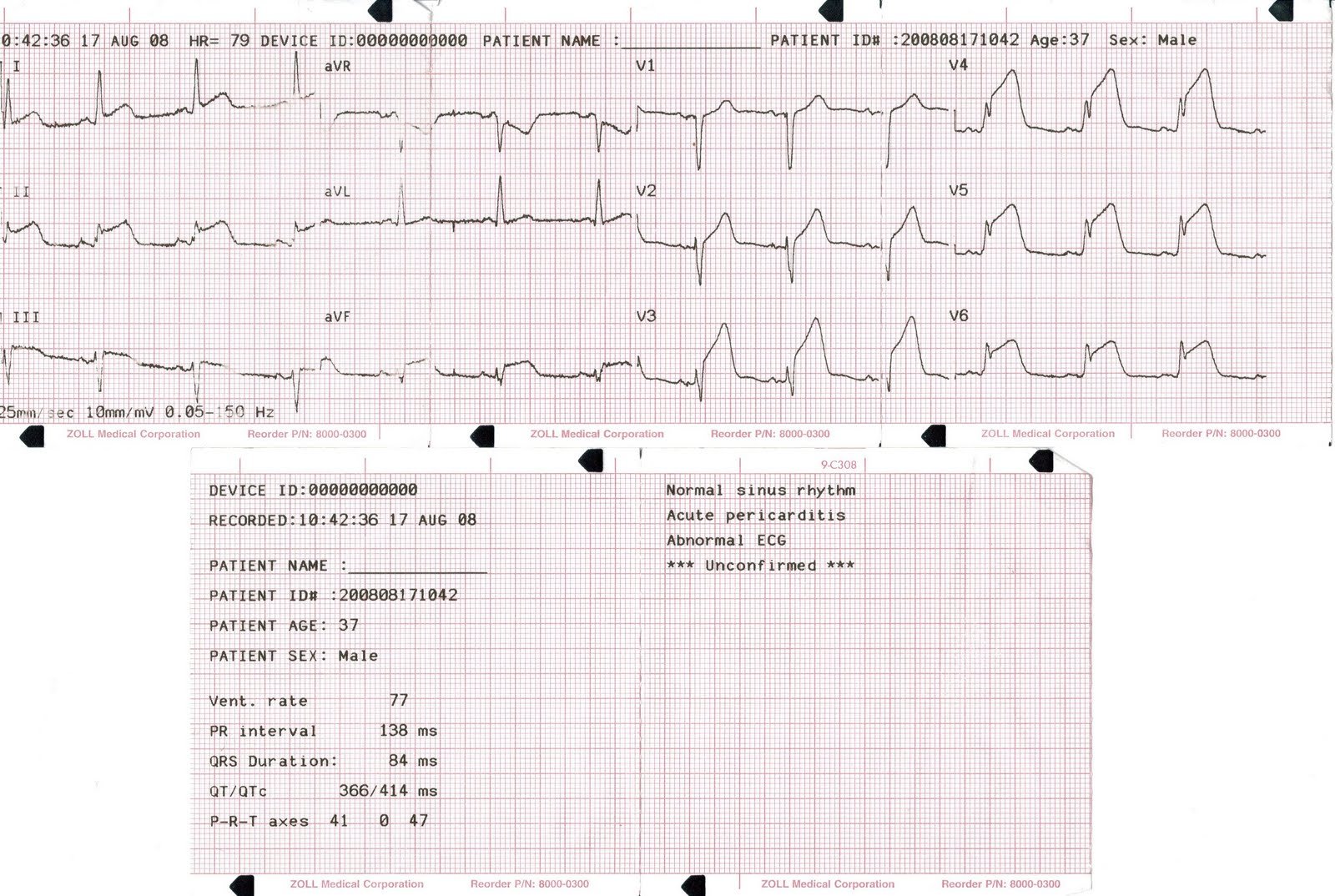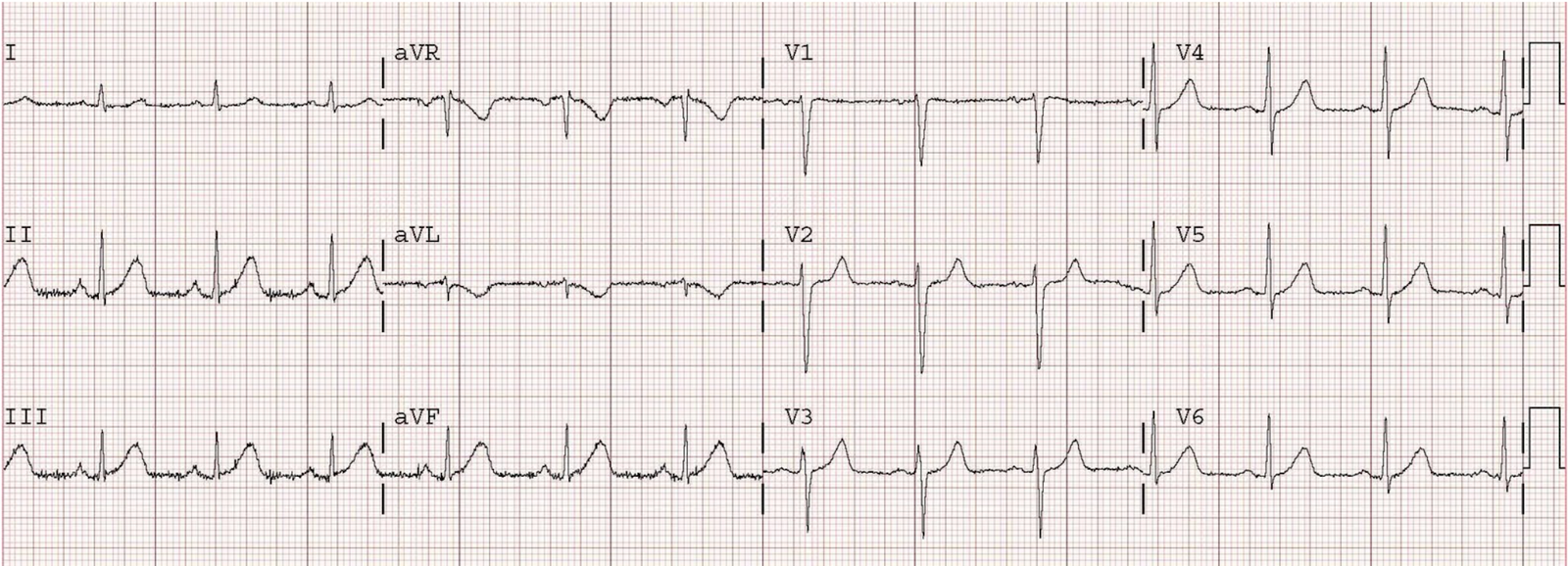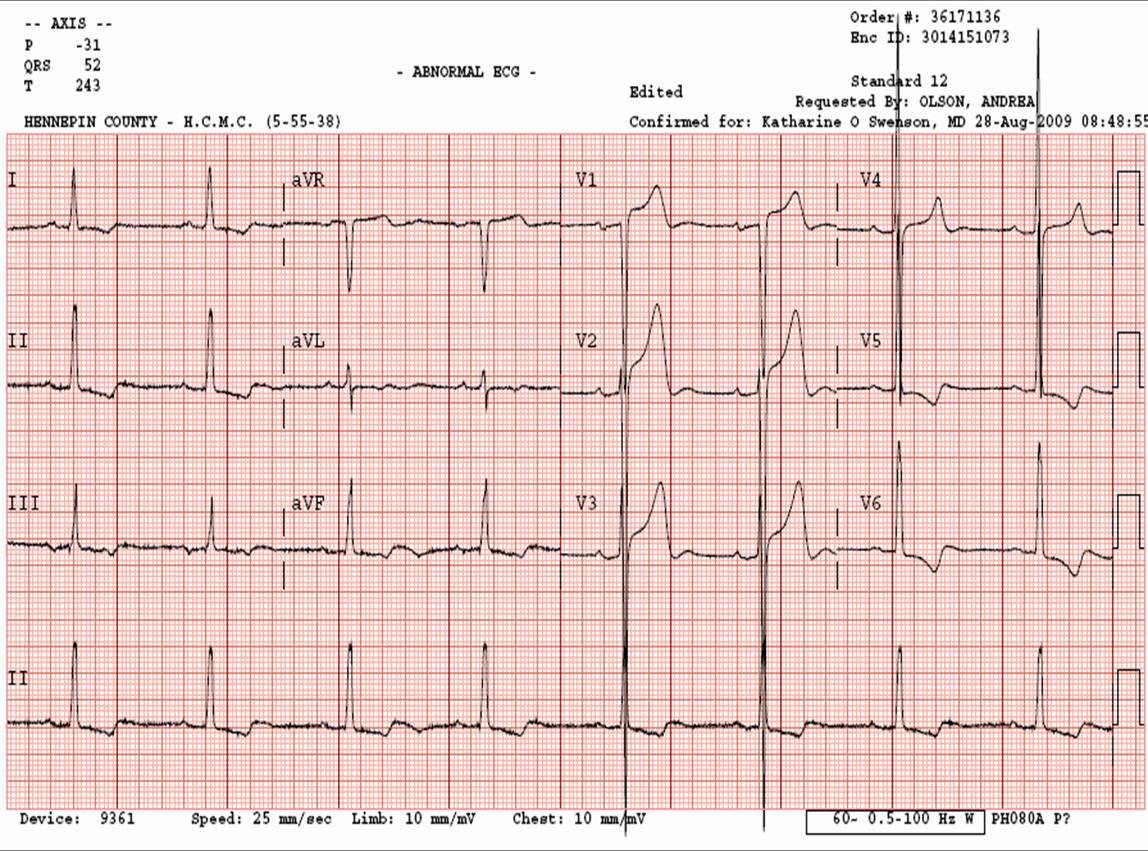For more on computer misses, click here:
This is the prehospital ECG of a 37 year old male with chest pain. It is obviously an acute STEMI, and in this case involved a proximal wraparound LAD supplying the anterior, lateral, and inferior walls. Hence the widespread ST elevation which the computer algorithm interprets as pericarditis. If the computer can make this mistake, you know it can make much less egregious mistakes (and I’ll assure you that it does).
Therefore, you must learn to read the ECG yourself.
Comments indicate that I need to explain this better: The ECG represents anterior STEMI, and not pericarditis, because 1) the ST elevation is in right precordial leads (V1-V3) as well as left (V4-V6) [pericarditis has more in the inferior and lateral leads and often looks like an inferolateral STEMI] 2) unlike pericarditis, the T waves are “hyperacute”, with straight ST segments; they look wide and bulky 3) there is very poor R wave progression, 4) there is “terminal QRS distortion“, meaning the S-wave is obliterated in many leads, particulary V4-V6, and 5) the QT is long. All of these favor acute STEMI over pericarditis.





Are you going to explain this one? Is it the shape of the STE?
um, if any human actually thinks this isn't a STEMI, they shouldn't be anywhere near a 12-lead.
Yes, but that's not the point. The point is this: if the computer can miss this one, just think how many really difficult and subtle ones it can miss!
i've noticed that LP12s love to interpret VT, even very obvious VTs, as a-flutter. even worse, people actually believe the auto-interpretation and fail to treat!
which brings us back to what you said: humans must learn how to read a 12-lead properly.
I wonder if the machine isn't interpreting it as an MI due to no reciprocal changes (not counting aVR). Sadly some hospitals in my area won't accept a STEMI alert unless the LP12 interprets it as a **Acute MI**.
I think you are right about this: no reciprocal ST depression. However, 50% of anterior STEMI does not have reciprocal ST depression in inferior leads, and inferior MI, when it is simultaneous with lateral STEMI (and ONLY when simultaneous with lateral STEMI!), may not have recriprocal ST depression in aVL. In this case there is simultaneous antero-infero-lateral MI.
Dr. Smith,
I wish they made an algorithm for proportionality to STE for QRS complexes less than 10mm in heighth to increase sensitivity. Hopefully your equation for differenciating BER to anterior STEMI gets in there as well.
Also for this strip, I have the PR interval at or slightly less than .12 even in the presence of a prolonged p-wave in II (which I've been told is indicitive of RAE?) which would lean towards an LGL syndrome right? Besides the obvious MI.
Not sure what you mean in the first comment.
As for the second, I think the computer's measurement of 138 ms is correct. However, if it were a short PR, then one must consider LGL but there can also be accelerated AV conduction.